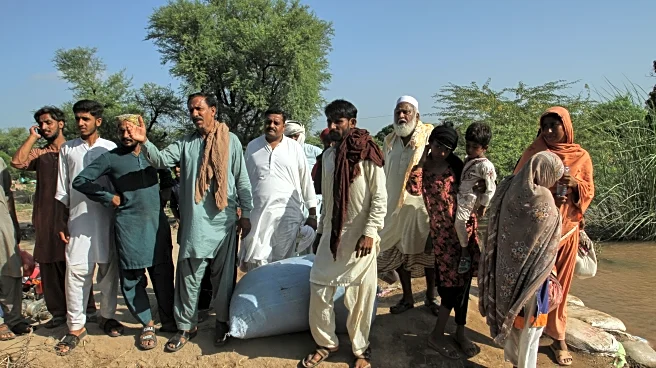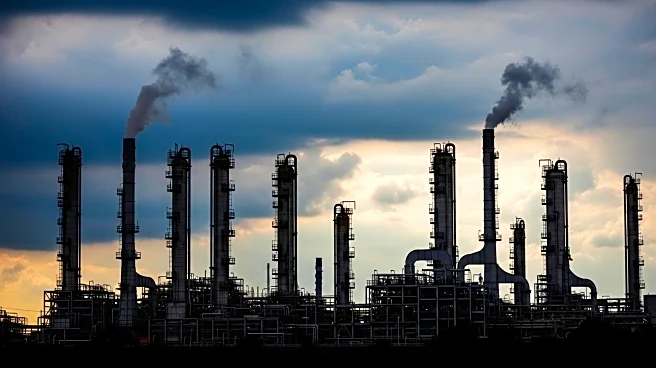What's Happening?
The Hong Kong Observatory has issued warnings regarding Typhoon Ragasa, which is expected to bring high winds, flooding, and elevated sea levels to Hong Kong. The typhoon is predicted to intensify as it moves across the Luzon Strait and enters the northern part of the South China Sea, potentially reaching Hong Kong by Wednesday. The Observatory forecasts that Ragasa will be classified as a super typhoon, with maximum sustained winds of 220 km/h near its center. This classification is equivalent to hurricane-force winds. The storm surge is anticipated to cause sea levels similar to those experienced during Typhoon Hato in 2017 and Typhoon Mangkhut in 2018, both of which resulted in significant damage and disruption.
Why It's Important?
The impending arrival of Typhoon Ragasa poses a significant threat to Hong Kong, with potential impacts on infrastructure, public safety, and daily life. The high winds and flooding could lead to property damage, transportation disruptions, and the closure of government facilities and schools. The economic implications are considerable, as past typhoons have caused billions of dollars in damage. The strengthening of tropical cyclones is attributed to warming seas, with over 90% of excess atmospheric heat absorbed by oceans, according to NASA. This trend underscores the growing challenges posed by climate change, affecting not only Hong Kong but also other regions prone to such natural disasters.
What's Next?
As Typhoon Ragasa approaches, the Hong Kong Observatory may issue a T10 signal, the highest storm warning, indicating hurricane-force winds. Residents are advised to stay indoors and avoid exposed areas. Temporary shelters will be available for those without safe refuge. Public transportation services, including buses and ferries, will be suspended, although trains may operate in underground sections if conditions allow. The Observatory warns of a possible temporary lull if the eye of the cyclone passes directly over Hong Kong, followed by a sudden resumption of violent winds. Preparations and precautions are crucial to minimize the impact of the typhoon.
Beyond the Headlines
The intensification of Typhoon Ragasa highlights the broader issue of climate change and its role in strengthening tropical cyclones. The increasing frequency and severity of such storms pose ethical and policy challenges, necessitating enhanced disaster preparedness and climate resilience strategies. The situation calls for international cooperation to address the root causes of climate change and mitigate its effects on vulnerable regions.












